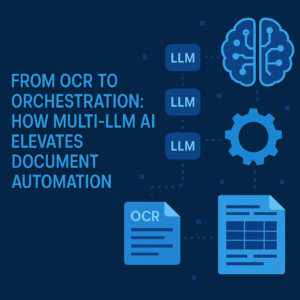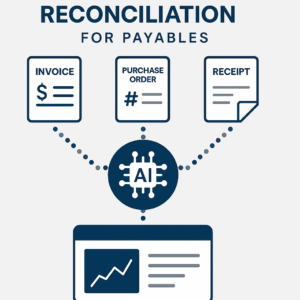Insights from Strategic Treasurer, Comerica Bank, and Itemize
Treasury and finance professionals are increasingly turning to Artificial Intelligence (AI) to address rising demands for efficiency, accuracy, and strategic insight. In a recent webinar hosted by Strategic Treasurer, with speakers from Comerica Bank and Itemize, the discussion focused on the real-world application of AI – especially agentic AI – and how it is reshaping treasury operations across banks and corporates.
Below are the key themes and takeaways from the session.
The AI Landscape: From Prediction to Action
The webinar introduced a useful framework for understanding the current AI landscape in finance, dividing technologies into three categories:
- Machine Learning (ML): Used to predict outcomes by analyzing historical data. Applications include forecasting cash flow, identifying at-risk payments, and optimizing working capital decisions
- Generative AI: Creates content such as documents, summaries, and recommendations. It supports tasks like drafting policies, extracting key points from contracts, and summarizing complex reports
- Agentic AI: Executes tasks autonomously based on contextual instructions. This is where the most significant transformation is occurring -automating end-to-end workflows such as reconciliation, cash reporting, and document classification
According to the speakers, agentic AI marks a major shift from static automation toward adaptive, context-aware financial operations.
Strategic Priorities in AI Adoption
A live poll during the webinar revealed where finance teams are currently applying AI:
- 49% are focused on back-office automation
- 43% are using AI for forecasting
- 37% are targeting fraud detection
- Risk management, customer service, and quality control followed
These results reflect the operational pain points many treasury teams face: fragmented data, high manual workloads, and growing risk exposure.
The conversation emphasized how agentic AI can consolidate data from various sources – including scanned documents, emails, ERP systems, and bank portals – into a structured, actionable format, enabling real-time visibility and decision-making.
Breaking Through Traditional Automation Barriers
Legacy automation systems have struggled with unstructured or semi-structured data. According to the panel, agentic AI changes the equation.
New capabilities include:
- Understanding context within poorly formatted PDFs, scanned invoices, and emails
- Extracting item-level data and linking it across documents (e.g., matching a PO to an invoice and shipping receipt)
- Detecting anomalies or risks across time (e.g., payment timing shifts, behavior changes)
- Supporting dynamic scoring for fraud or compliance exposure
This new generation of AI is not limited by fixed templates or rigid rules. It learns and adapts over time, significantly improving process automation and data accuracy.
Use Cases Across the Treasury Lifecycle
Speakers shared examples of how AI is already delivering results:
Machine Learning
- Forecasting cash inflows and outflows
- Predicting payment delays
- Optimizing timing for early pay discounts
Generative AI
- Drafting RFPs and financial policies
- Summarizing long-form content (contracts, reports)
- Interpreting financial regulations and suggesting workflow controls
Agentic AI
- Automating daily liquidity reporting by logging into multiple systems and consolidating balances
- Managing reconciliation and exception handling with minimal human oversight
- Processing accounts receivable and payables, including cash application and redaction of sensitive data
Comerica Bank’s Crystal Stephens described how her team reduced full-time effort on receivables by automating cash application, freeing staff to focus on higher-value activities like capital planning and risk assessment.
Addressing Concerns About AI
When asked about barriers to adoption, attendees cited the following top concerns:
- Data privacy and security risks (67%)
- Model bias or inaccuracy (47%)
- Loss of control or oversight (40%)
There was also recognition that internal expertise is often lacking. However, the speakers emphasized that modern AI tools are intuitive and accessible – often requiring only natural language prompts. The new skillset isn’t coding; it’s knowing how to interact with AI tools effectively.
Steve Markle noted that AI is a “force multiplier,” especially for new entrants in finance who can automate low-value tasks and quickly move up the value chain.
Justifying the Investment
The webinar closed with a structured approach to justifying AI initiatives:
- Identify clear use cases based on existing pain points
- Quantify impact in terms of efficiency gains, cost savings, or risk mitigation
- Align with strategic goals – whether it’s capital efficiency or compliance
- Define success metrics for a pilot
- Start small and scale as confidence and results grow
The speakers stressed that unlike ERP overhauls, implementing AI doesn’t require massive upfront investments. Modular solutions can be piloted quickly, often delivering ROI in a matter of months.
Final Thoughts
AI is already transforming treasury. It is not theoretical or futuristic – it is operational today. The greatest gains will come not from isolated experiments, but from strategic implementations tied to business outcomes.
Whether you are a bank looking to modernize lockbox operations or a corporate finance team automating invoice processing, now is the time to act. Start with data-rich, repeatable processes. Build a business case around value, not hype. And most importantly, prepare your team to lead – not just follow – the transformation.




